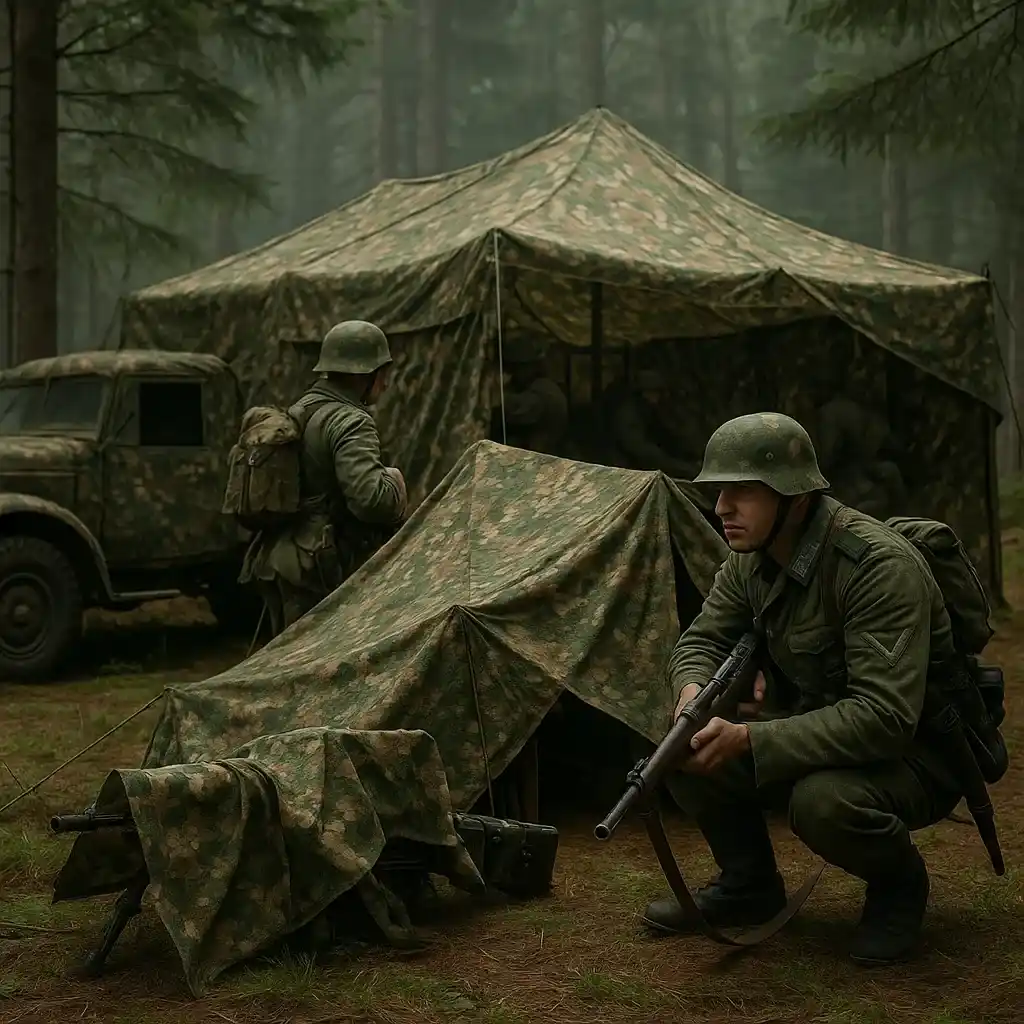When you hear the word “Tarnplanen,” what comes to mind? Perhaps a classic image of a green-and-brown net draped over a tank in a war movie. But this simplistic view barely scratches the surface. Modern Tarnplanen (the German word for camouflage netting or concealment nets) is a pinnacle of scientific innovation, a high-tech tool designed to deceive not just the human eye, but advanced sensors, thermal imagers, and radar systems.
This isn’t just about hiding; it’s about becoming invisible across the entire electromagnetic spectrum. In this comprehensive guide, we’ll pull back the veil on Tarnplanen, exploring its evolution, sophisticated technology, and the critical role it plays in today’s world.
What Exactly is Tarnplanen? More Than Just a Net
At its core, Tarnplanen is a manufactured material, typically a netting system, used to conceal personnel, equipment, vehicles, and positions from detection. Its function extends far beyond simple visual disruption. The ultimate goal is to break up recognizable outlines, blend with the surrounding environment (background matching), and defeat electronic surveillance.
The term itself is German, combining “Tarn-” (concealment or camouflage) and “Planen” (sheets/tarps), but its use and development are global. From military operations to wildlife photography, the principles of camouflage remain constant.
A Brief History: From Nature’s Inspiration to Battlefield Necessity
The concept of camouflage is ancient, inspired by nature’s own experts: the chameleon, the octopus, and the stick insect. However, organized military camouflage emerged prominently during World War I.
As aerial reconnaissance became a key strategic tool, the need to hide from observers in airplanes became critical. Artists and designers were often recruited to create patterns and netting to disguise gun emplacements and trenches. This evolved dramatically during World War II, where entire factories and airfields were hidden under elaborate netting systems.
The Cold War and subsequent technological leaps propelled Tarnplanen into a new era. The invention of radar, thermal scopes, and night-vision goggles meant that nets had to become multi-spectral guardians, leading to the advanced systems we see today.
The Modern Marvel: How High-Tech Tarnplanen Works
Today’s camouflage netting is a multi-layered, engineered product. It’s not just woven fabric; it’s a complex system designed to provide protection in several key spectra:
1. Visual Spectrum Protection
This is the most basic function. It involves using colors and patterns that mimic the intended environment (woodland, desert, snow, urban). The netting creates shadows and highlights, breaking up the hard, geometric lines of vehicles and equipment that the human eye is naturally drawn to.
2. Near-Infrared (NIR) Protection
NIR technology allows night-vision goggles (NVGs) to detect reflected light outside the visible range. Standard green paint might look right to the eye, but it can appear brilliantly different under NIR. Modern Tarnplanen uses special NIR-resistant dyes and materials that reflect light at the same intensity as the natural background, making the concealed object blend in even under night-vision scrutiny.
3. Thermal Infrared (IR) Protection
This is one of the most crucial advancements. Thermal imagers detect heat signatures—the engine of a tank, the body heat of soldiers, or electronics all glow brightly. Thermal Tarnplanen often incorporates:
- Insulating Layers: To trap and dissipate heat slowly, preventing a sharp thermal contrast.
- Special Coatings: That reflect or emit thermal energy in a way that matches the ambient temperature of the surroundings, effectively making a hot vehicle look like a cool patch of ground.
4. Radar Spectrum Protection
Radar detection uses radio waves to find objects. Radar-Absorbent Material (RAM) is integrated into high-end Tarnplanen. This material is designed to absorb radar waves rather than reflect them back to the receiver, significantly reducing the radar cross-section (RCS) of the concealed object.
Types and Applications: Where is Tarnplanen Used?
The diversity of Tarnplanen matches the diversity of its applications.
By Environment:
- Woodland/Jungle: Lush greens, browns, and black patterns.
- Desert/Arid: Tans, light browns, and beiges.
- Arctic/Snow: Whites and very light grey patterns.
- Urban: Grey, black, and white patterns to mimic concrete and shadows.
By Application:
- Military: The primary user. Concealing tanks, artillery, command posts, supply depots, and personnel.
- Hunting & Wildlife Photography: Allowing observers to get close to animals without disturbing them.
- Security & Law Enforcement: For concealing sniper positions or observation posts during sensitive operations.
- Civilian & Recreational: Used for privacy screens in gardens, camping, and even as aesthetic shades.
Key Considerations When Choosing Tarnplanen
Selecting the right camouflage netting isn’t a one-size-fits-all process. Key factors include:
- Environment: Match the pattern to your primary area of operation.
- Threat Level: Do you need protection from visual, NIR, thermal, or radar detection? The level of protection drastically affects cost and weight.
- Durability & Weight: Military-grade nets are durable but can be heavy. Lightweight nets are portable but may offer less protection.
- Modularity: Some modern systems are designed as lightweight panels that can be quickly assembled and reconfigured.
The Future of Concealment: What’s Next for Tarnplanen?
The arms race between detection and concealment never stops. The future of Tarnplanen lies in adaptive or “smart” camouflage. Inspired by cephalopods like the octopus, researchers are developing materials that can change their color and pattern in real-time to match any background instantly. Other areas of development include:
- Meta-materials: Engineered materials that can manipulate electromagnetic waves in unprecedented ways, potentially making objects truly “invisible” to radar.
- Improved Lightweight Composites: Making high-spectrum protection more accessible and portable for individual soldiers.
Conclusion: The Unseen Shield
Tarnplanen has evolved from a simple sheet of cloth to a sophisticated multi-spectral defense system. It represents the relentless pursuit of tactical advantage through science and engineering. In a world where being seen often means being vulnerable, this technology serves as an essential shield, protecting assets and lives by embracing the ancient art of hiding in plain sight—and now, invisible to sensors.
Whether on the front lines or in a nature reserve, the principles of Tarnplanen remind us that sometimes, the most powerful tool is the one that allows you to disappear completely.

